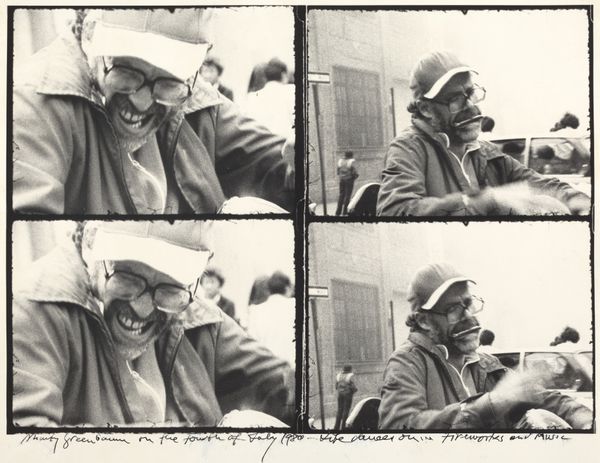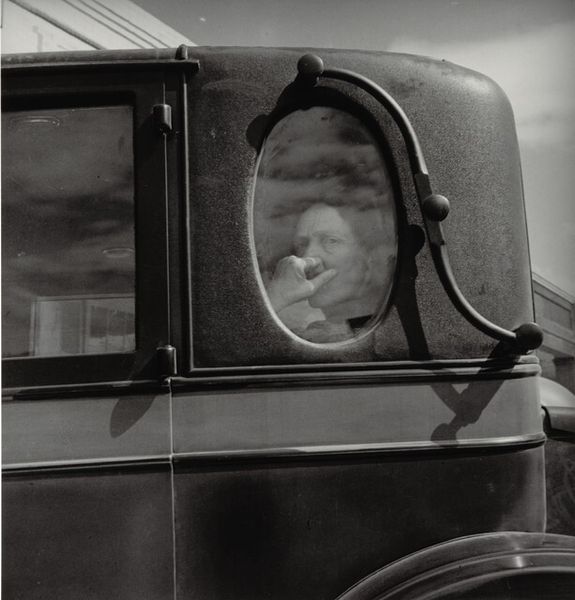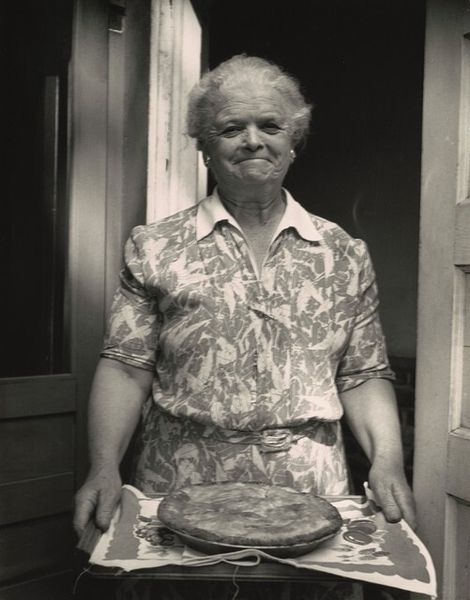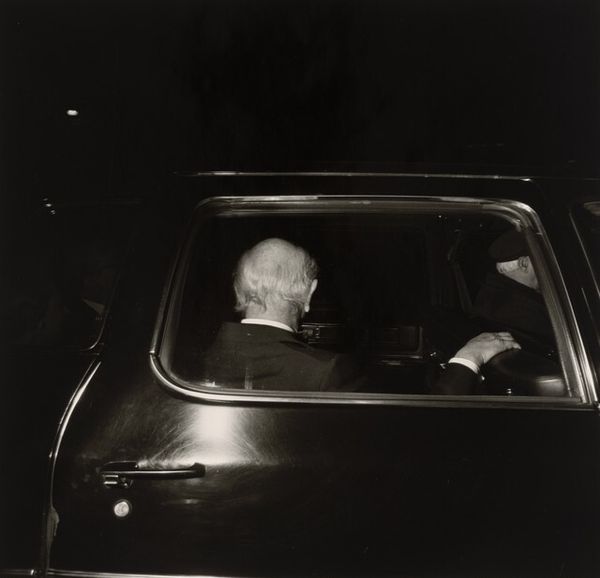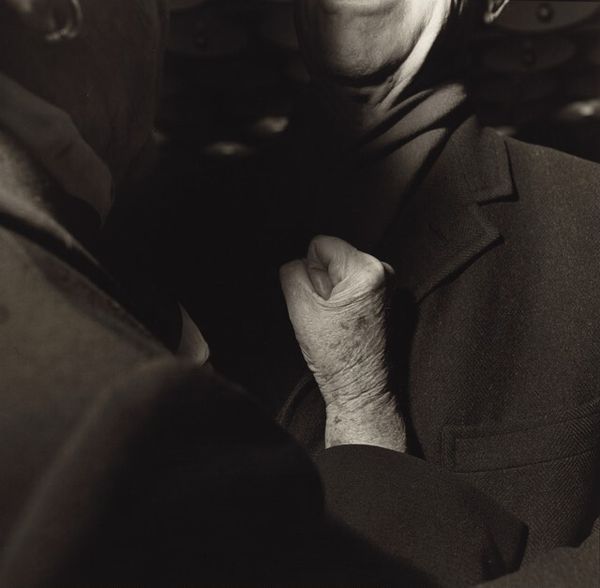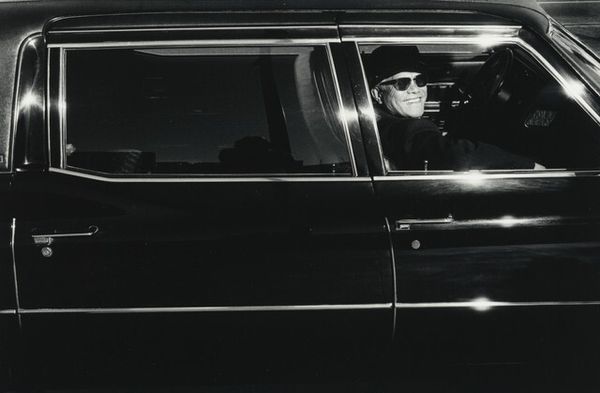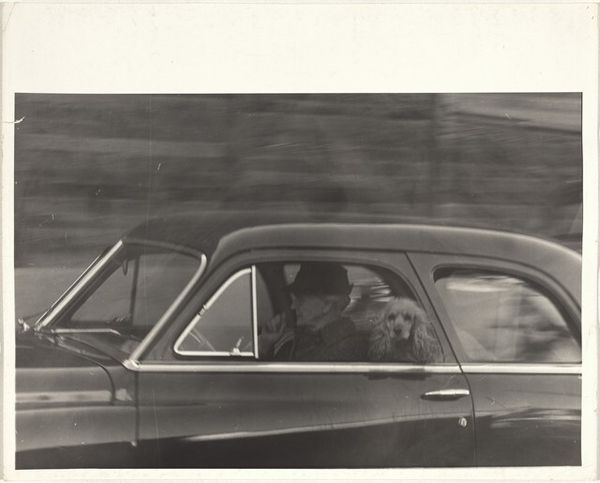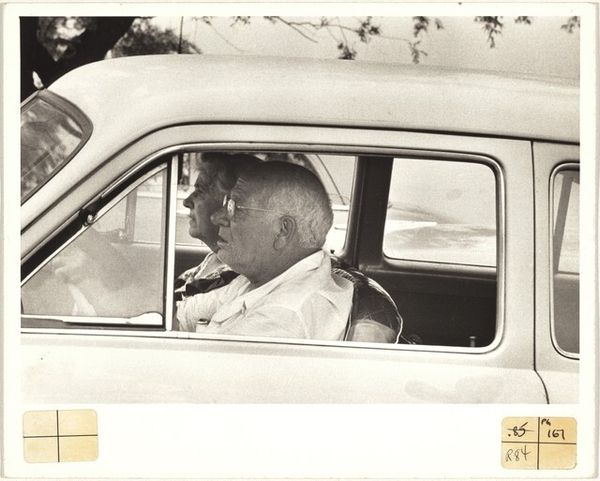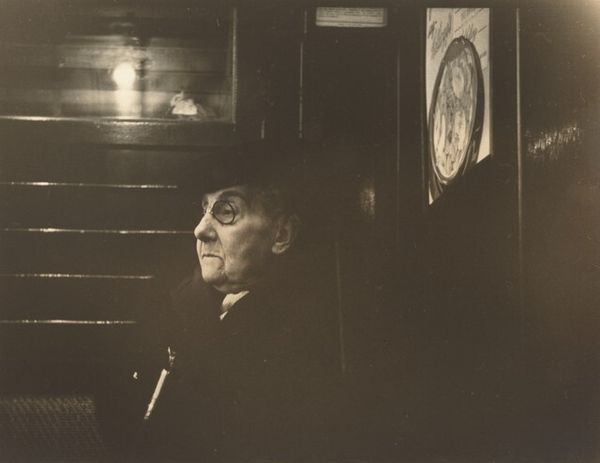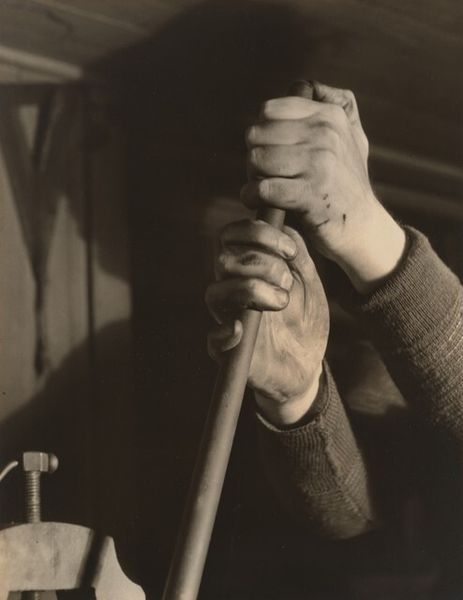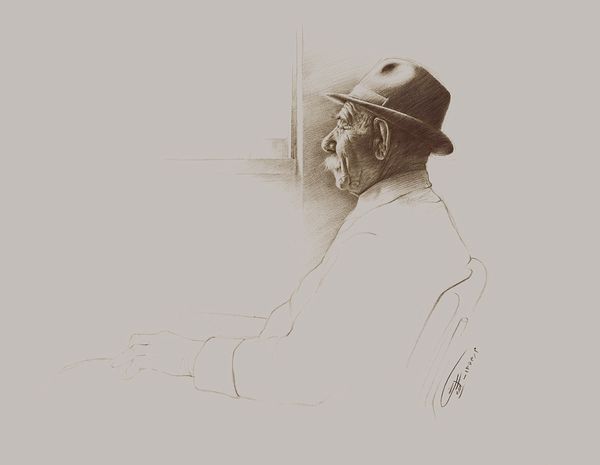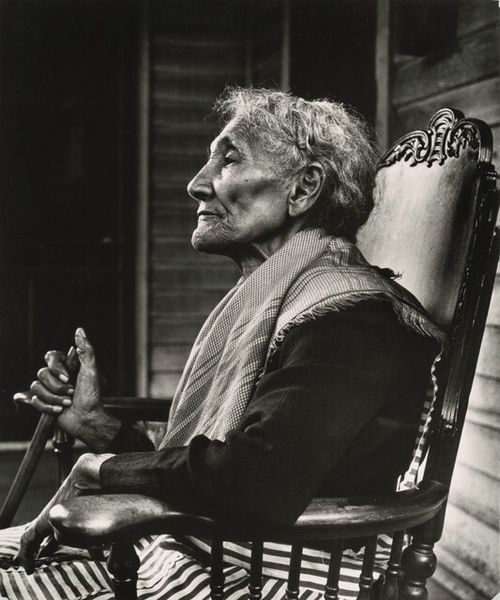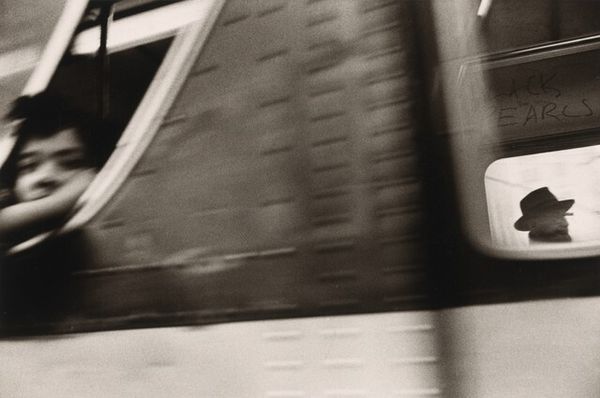
Eighty-year-old woman living in squatters' camp on the outskirts of Bakersfield, California. "If you lose your pluck you lose the most there is in you—all you've got to live with" 1936
0:00
0:00
photography, gelatin-silver-print
#
portrait
#
landscape
#
social-realism
#
photography
#
gelatin-silver-print
#
ashcan-school
#
realism
Dimensions: image: 19 × 24.4 cm (7 1/2 × 9 5/8 in.) sheet: 20.3 × 25.5 cm (8 × 10 1/16 in.)
Copyright: National Gallery of Art: CC0 1.0
Editor: This compelling gelatin silver print by Dorothea Lange, taken in 1936, portrays an eighty-year-old woman in a California squatter’s camp. There’s a striking sense of resilience in her gaze, shadowed by her hand shielding her eyes. How do you interpret the symbols within this image, especially considering the historical context of the Great Depression? Curator: Lange’s work is indeed saturated with symbols. The woman’s weathered face and worn clothing are visual markers of hardship, echoing the experiences of many during the Depression. The act of shielding her eyes can be read as more than protection from the sun; it’s a gesture of looking towards an uncertain future, a future she’s bravely trying to navigate. It also reminds me of the iconic Delphic Sibyls in antiquity, often portrayed looking far into the future. The shadows emphasize the gravity of her circumstances but do you see other symbols within the image’s visual construction? Editor: I notice the figure in the background with a raised eyebrow. It almost feels like Lange intended to capture a contrast, the doubt and wonder on the face of one set against the stern and knowing glance of the other. Curator: An insightful point! He’s positioned further back and perhaps represents a different way of facing adversity, a kind of watchful presence or commentary. It highlights the multifaceted nature of human response to displacement and poverty. I also find that Lange uses stark realism to document and advocate. This photograph isn't just a portrait; it's a narrative steeped in cultural memory, demanding empathy. Her approach makes us ponder not just their experience but also ours. Editor: That’s powerful. Thinking about the image as a symbol of cultural memory rather than just a portrait of an individual, I understand better its emotional weight. Curator: Precisely. Every detail is a trace of experience, contributing to the photograph's enduring impact. This piece echoes across time.
Comments
No comments
Be the first to comment and join the conversation on the ultimate creative platform.
